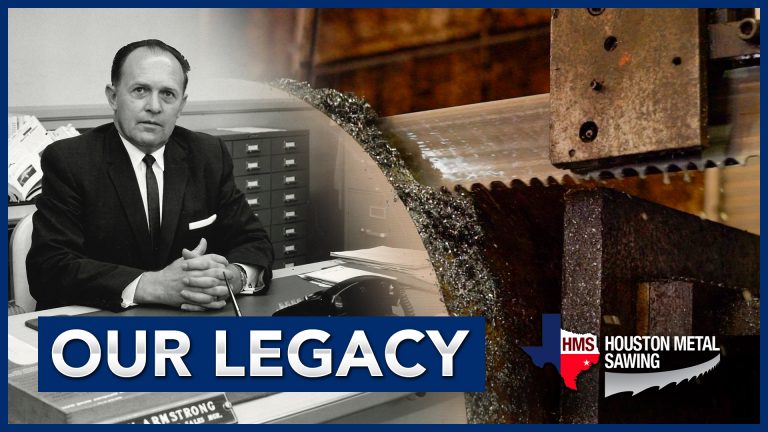Cobalt Alloys
Cobalt Alloys Product Guide
Cobalt is helpful in applications that take advantage of its wear resistance, corrosion resistance, magnetic characteristics, and strength at high temperatures.
The wear resistance of cobalt-base alloys is given a lot of attention because this is the one area where cobalt-base alloys are used the most. However, when it comes to heat-resistant applications, Cobalt is employed more often as an alloying element in nickel-base alloys than in cobalt-base heat-resistant alloys. This is because nickel-base alloys require more cobalt tonnages than cobalt-base alloys.
Table of Contents
Elemental Cobalt
The Physical characteristics
Cobalt has an atomic number of 27 and sits between iron and nickel on the periodic table of elements. It has a density of 8.8 g/cm3, about the same as nickels. However, its thermal expansion coefficient is in the middle compared to iron and nickel. Cobalt has a hexagonal close-packed structure at temperatures lower than 417°C. The cobalt crystal structure is a face-centered cubic with a temperature range of 417°C to 1493°C.
Also, when measured in tension, the elastic modulus of Cobalt is around 210 GPa (30 x 106 psi), while when measured in compression, it is approximately 183 GPa (26.5 x 106 psi).
Applications of Cobalt
Cobalt is a crucial component in various alloys, including those with a cobalt base. Some typical applications of Cobalt include:
- Artificial gamma-ray sources
- Paint pigments
- Magnetic materials
- Cemented carbides and tool steels
- Nickel-base superalloys
From the above-listed use of Cobalt, the paint pigments application is widely known.
Cobalt, usually present in the range of 10 to 15 weight percent, is responsible for solid solution strengthening in nickel-base superalloys. Additionally, Cobalt inhibits the solubility of aluminum and titanium, which ultimately increases the volume fraction of gamma prime (?) residue.
Also, Cobalt plays an essential function in cemented carbides since it is responsible for providing a ductile bonding matrix for the tungsten-carbide particles. Hence, there is a wide range of cobalt content in economically relevant cemented carbides, from 3% to 25%. However, cemented carbides containing between 3 and 12 weight percent cobalt are often used as materials for cutting tool construction.
As Cobalt is inherently ferromagnetic, it is a barrier against demagnetization in many permanent magnet materials. The iron-cobalt alloys, for example, and the aluminum-nickel-cobalt alloys (where cobalt concentrations vary from 5 to 35 weight percent) are some examples (approximately 5 to 12 wt percent ). This is in addition to rare-earth intermetallics, which comprises some of the most increased magnetic effects of all known materials.
Also, the man-made isotope cobalt-60 serves as an important?-ray source in various applications, including those in the medical and industrial fields.
Cobalt-Base Alloys
The cobalt-base alloys exhibit excellent corrosion resistance, wear resistance, and thermal stability even at extreme temperatures when viewed as a whole.
Cobalt-based alloys have heat-resistant, wear-resistant, and corrosion-resistant properties even at extreme temperatures. Some factors that contribute to the quality of these alloys include tungsten, the solid-solution-strengthening effects of chromium, Cobalt’s crystalline character (in particular its sensitivity to stress) , and molybdenum. Likewise, some additional factors include the creation of metal carbides and the corrosion resistance conferred by chromium. Most of the time, the softer and more rigid materials are used for high-temperature applications, like gas turbine vanes and buckets. However, the more rigid grades are utilized to withstand wear and tear.
Since Elwood Haynes’ work on cobalt-chromium-tungsten and cobalt-chromium-molybdenum ternaries in the early 1900s, several commercial cobalt-base alloys have been developed from these ternaries. Tungsten and molybdenum were revealed to be effective strengthening agents inside the binary cobalt-chromium system and were subsequently characterized by him as having high strength and stainless nature. Haynes termed these alloys the Stellite alloys after the Latin stella (star) because of their star-like glitter. Haynes pushed for using Stellite alloys as cutting devices after discovering their exceptional temperature resistance and tensile strengths.
Cobalt-Base Wear-Resistant Alloys
There hasn’t been much of a shift from the early alloys developed by Elwood Haynes to the modern cobalt-base wear alloys. The most significant distinctions are the relative amounts of carbon and silicon in the material serving as imparities in the earlier alloys. Indeed, the primary distinctions between the various Stellite alloy grades lie in their respective amounts of carbon and tungsten. This is often referred to as the amount and type of carbide formation in the microstructure during solidification. The amount of carbon in a material affects its hardness, flexibility, and abrasion resistance. Additionally, tungsten plays an essential function.
| Element | Composition |
|---|---|
| C | 0.25-3.3% |
| Mo | 1% max |
| Ni | 3% max |
| Cr | 25-30% |
| W | 2-15% |
| Mn | 1% max |
| Fe | 3% max |
| Si | 2% max |
| Co | Rest of balance |
Forms of wear
There are a variety of various forms of clothing that, in general, may be divided into the following three categories:
- Erosive wear
- Abrasive wear.
- Sliding wear
When deciding on a wear-resistant material, one of the most crucial factors is the nature of the wear that will be experienced in a particular application.
Abrasive wear
A surface will experience abrasive wear when rigid particles or hard edges (on a counterface) are pressed against it while also moving relative to it. The words high stress and low-stress abrasion refer to the state of the abrasive medium, whether it be hard particles or projections after interacting with the surface. Hence, an abrasive media crushed under high stress is in an environment of high pressure. However, it is called low-stress abrasion when the abrasive media is not damaged throughout the process. Low-stress abrasion occurs when moving areas meddle with packed abrasives like dirt and sand. Still, high-stress abrasion occurs when hard particles get entrapped between metallic surfaces (while the surfaces are moving relative to one another).
The abrasion resistance of alloys, including a hard phase, such as cobalt-base wear alloys, typically rises with the volume percent of the hard phase. However, the size and form of the hard phase precipitate in the microstructure and the abrading species significantly impact abrasion resistance.
Sliding Wear
Among the three basic forms of wear, sliding is possibly the most difficult to understand because of the wide variety of ways in which various materials react to sliding. When two surfaces are pushed together and shifted, sliding wear is possible. If both contacting surfaces are made of metal, and if there is little to no lubrication between them, the likelihood of damage occurring is significantly enhanced.
Cobalt-Base High-Temperature Alloys
High-temperature alloys have long been used extensively in the gas turbine sector. So, among the essential material requirements for aeroplane gas turbines were high-temperature strength, thermal fatigue resistance, and oxidation resistance. Resistance to sulfidation was the primary problem for land-based gas turbines, which usually burn fuels of lesser quality and work in environments with lower temperatures.
However, a wide range of applications for high-temperature alloys is now possible because of the increasing need for energy efficiency and innovative chemical processing methods.
| Element | Composition |
|---|---|
| C | 0.1-0.6% |
| Cr | 20-23% |
| Ni | 10-22% |
| Fe | 3% max |
| W | 7-15% |
| Co | Rest of balance |
Although cobalt-base alloys are not as often employed in high-temperature applications as nickel and nickel-iron alloys, cobalt-base high-temperature alloys nevertheless play a significant role due to their outstanding resistance to sulfidation. Also, their sturdiness at temperatures higher than those at which the gamma-prime- and gamma-double-prime-precipitates in nickel and nickel-iron alloys dissolve. In addition, Cobalt is employed as an alloying element in a wide variety of nickel-based high-temperature alloys.
Cobalt-Base Corrosion-Resistant Alloys
Despite having considerable resistance to water corrosion, cobalt-base wear-resistant alloys are constrained by grain boundary carbide precipitation, a deficiency in essential alloying elements in the matrix (after the production of the carbides or Laves precipitates), and, in the case of cast and weld overlay materials, chemical segregation in the microstructure.
In terms of corrosion resistance, the wrought cobalt-base high-temperature alloys (usually including tungsten rather than molybdenum) are even more robust than the nickel-chromium-molybdenum alloys because of their homogenous microstructures and reduced carbon concentrations.
Various low-carbon, wrought cobalt-nickel-chromium-molybdenum alloys have been developed to meet the industrial sector’s needs for alloys resistant to aqueous corrosion while maintaining the properties of Cobalt as an alloy basis.
| Element | Composition |
|---|---|
| Mo | 5-10% |
| Cr | 20-25% |
| Ni | 9-35% |
| N | 0.1% max |
| W | 2% |
| C | 0.8% max |
| Fe | 3% max |
| Co | Rest of balance |
Request For Quote

Monday through Friday
8:00 AM to 5:00 PM Central Time
Houston, Texas 77093
Our sawing capabilities include a large range of metals, castings, plastics or molded parts. You can count on Houston Metal Sawing to deliver your parts on time and within budget.





